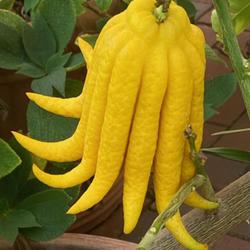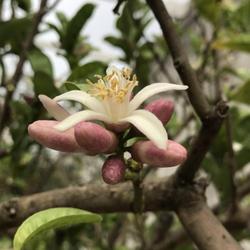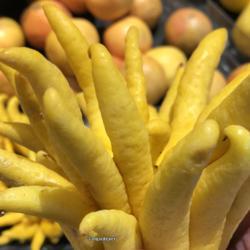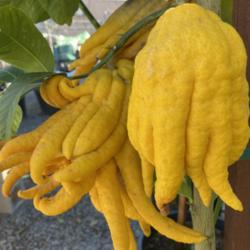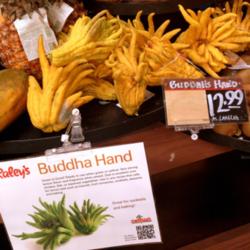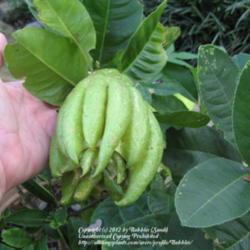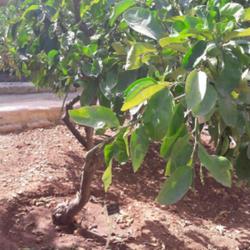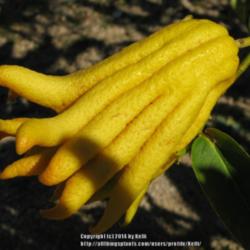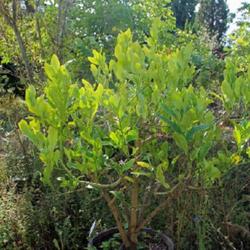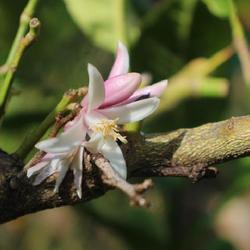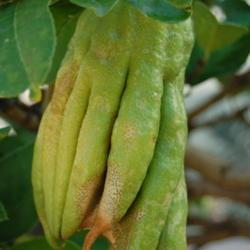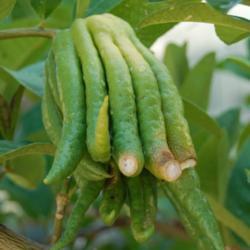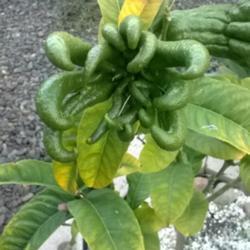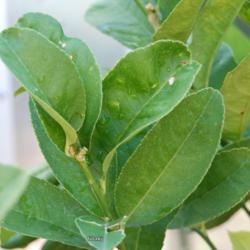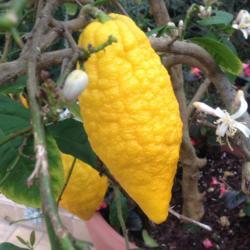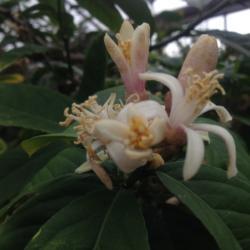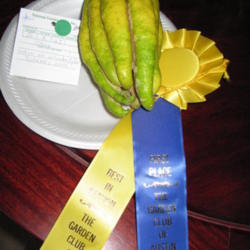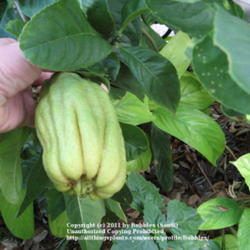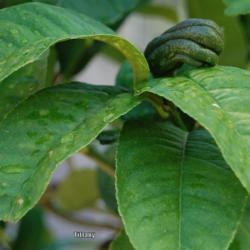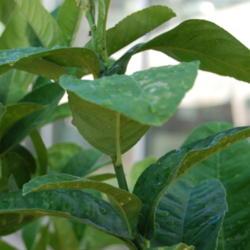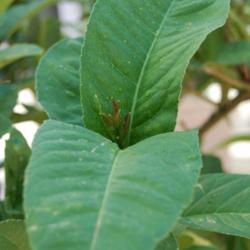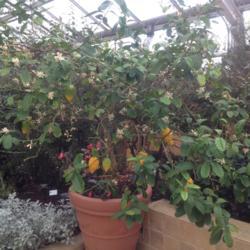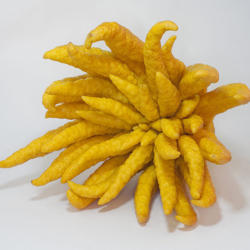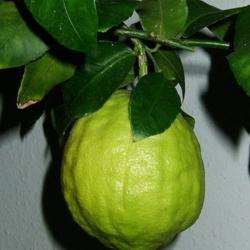Posted by
valleylynn (Oregon City, OR - Zone 8b) on Dec 13, 2011 4:30 PM concerning plant:
A fruit better known to most consumers in its preserved rather than in its natural form. Slow growing shrub or small tree reaching 8 to 15 ft (2.4-4.5 m) high, with stiff branches and stiff twigs and short or long spines in the leaf axils.
Foliage and fruit easily damaged by very intense heat and drought. Best citron locations are those where there are no extremes of temperature.
The soils where the citron is grown vary considerably, but the tree requires good aeration.
The citron tree tends to put out water sprouts that should be eliminated, and the grower should prune branches hanging so low that they touch the ground with the weight of the fruit. Italian producers keep the tree low and stake the branches, and may even trim off the thorns, to avoid scarring of the fruits. The trees begin to bear when 3 years old and reach peak production in 15 years; die in about 25 years.
The citron tree blooms nearly all year, but mostly in spring and the spring blooms produce the major part of the crop. The fruit is dark-green when young, takes 3 months to turn yellow. To retain the green color, firmness and uniformity desired by the dealers in candied citron, the fruit must be picked when only 5 to 6 in (12.5-15 cm) long and 3 to 4 in (7.5-10 cm) wide. Mature trees yield an average of 66 lbs (30 kg) per year but exceptional trees have borne as much as 150 to 220 lbs (68-100 kg).
The citron tree is subject to most of the pests that attack other Citrus species. The citrus bud mite (Eriophyes sheldoni), citrus rust mite (Phyllocoptruta oleivora), and snow scale (Unaspis citri) are among its major enemies.
Horticulturists in Florida report that citron trees in this state are nearly always unthrifty, are subject to gummosis, and usually in a state of decline and dieback, and are accordingly poor bearers.
Branch knot, caused by the fungus Sphaeropsis tumefaciens, was first noticed on citron trees in Puerto Rico in 1977. By 1983, it had become a serious threat to the local citron industry. The deformations become large and necrotic, lead to witches' broom, dieback and breaking of branches.
The most important part of the citron is the peel, which is used for making candied Citron, Citron Tea (very much like orange marmalade and is made with honey), used in flavoring beverages such as wine and vermouth.
The citron's place of origin is unknown but seeds were found in Mesopotamian excavations dating back to 4000 B.C. The armies of Alexander the Great are thought to have carried the citron to the Mediterranean region about 300 B.C. The citron was a staple, commercial food item in Rome in AD 301.
The fruit was imported into Greece from Persia (now Iran). Greek colonists began growing the citron in Palestine about 200 B.C. The tree is assumed to have been successfully introduced into Italy in the 3rd Century. The trees were mostly destroyed by barbarians in the 4th Century but those in the "Kingdom of Naples" and in Sardinia and Sicily survived.
